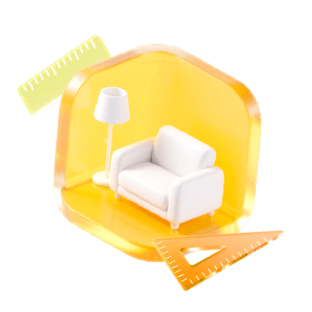Crafting a complete home layout using Photoshop may appear challenging at first, yet it transforms into an enjoyable project with appropriate strategies. This article will guide you through the crucial steps required to develop a detailed house plan, featuring renders that vividly depict your ideas. Whether you’re an up-and-coming designer or a homeowner aiming to visualize your ideal space, this journey offers invaluable guidance, especially with tools like Homestyler at your disposal.
Begin by collecting all the essential resources: your creative ideas, accurate measurements, and any inspiration you've gathered. Open a new project in Photoshop and make use of layers to keep your workspace structured. The core of your masterpiece will be the floor plan, so entering precise dimensions for each room and key architectural features is essential.
Strategies for Developing Your Floor Plan
1. **Utilize the Grid Feature**: Activate the grid option in Photoshop to ensure scale and proportion are maintained, aiding in the creation of precise room dimensions.
2. **Efficient Layering**: Establish distinct layers for walls, doors, windows, and furnishings. This approach allows for easy modification of specific elements without disrupting the overall layout.
3. **Implement Standard Symbols**: Leverage universal symbols for windows and doors to expedite your design process. This technique saves time and improves the clarity of your plan.
Breathing Life into Your Design
After finalizing your floor plan, the next step is to enliven it through rendering. This process entails generating a three-dimensional visual depiction of your design aspirations.
1. **Applying Textures**: Utilize Photoshop’s texture features to impart realistic surfaces to both floors and walls. Think about using materials like wood, tile, or paint that resonate with your vision.
2. **Implementing Lighting Effects**: Introduce lighting effects to enrich the ambiance of your design. Layer styles can be employed to simulate natural light streaming through windows or artificial illumination from light fixtures.
3. **Shadow Application**: Incorporate shadows to add depth to your rendering, giving it a more three-dimensional effect. Employ the brush tool with soft edges for creating subtle shadows beneath furniture and other items.
4. **Completing the Details**: Remember to integrate elements like landscaping to provide context for your design. This can include trees, walkways, or adjacent buildings, enhancing the overall look.
Tips for Maximum Effectiveness
Keep in mind these strategies to elevate your final presentation:
FAQ
Q: Are there free resources available for textures and symbols? A: Certainly, numerous websites provide complimentary textures and symbol libraries suitable for use in Photoshop.
Q: Is it necessary to have advanced Photoshop skills to create a house layout? A: While basic knowledge of Photoshop is sufficient to begin, consistent practice will significantly improve your capabilities over time.
welcome to the leading Home Design Software




























































